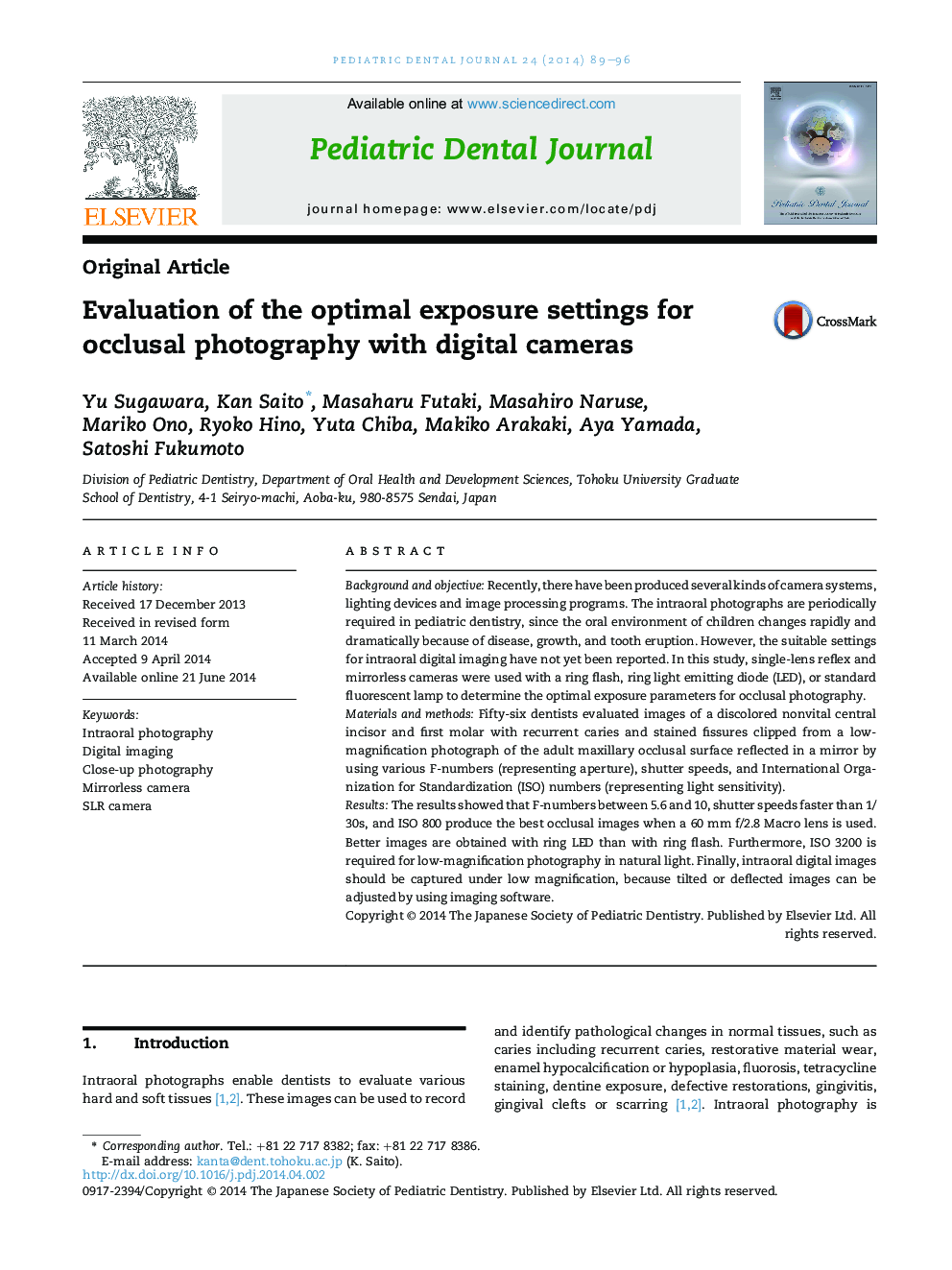| Article ID | Journal | Published Year | Pages | File Type |
|---|---|---|---|---|
| 3171522 | Pediatric Dental Journal | 2014 | 8 Pages |
Background and objectiveRecently, there have been produced several kinds of camera systems, lighting devices and image processing programs. The intraoral photographs are periodically required in pediatric dentistry, since the oral environment of children changes rapidly and dramatically because of disease, growth, and tooth eruption. However, the suitable settings for intraoral digital imaging have not yet been reported. In this study, single-lens reflex and mirrorless cameras were used with a ring flash, ring light emitting diode (LED), or standard fluorescent lamp to determine the optimal exposure parameters for occlusal photography.Materials and methodsFifty-six dentists evaluated images of a discolored nonvital central incisor and first molar with recurrent caries and stained fissures clipped from a low-magnification photograph of the adult maxillary occlusal surface reflected in a mirror by using various F-numbers (representing aperture), shutter speeds, and International Organization for Standardization (ISO) numbers (representing light sensitivity).ResultsThe results showed that F-numbers between 5.6 and 10, shutter speeds faster than 1/30s, and ISO 800 produce the best occlusal images when a 60 mm f/2.8 Macro lens is used. Better images are obtained with ring LED than with ring flash. Furthermore, ISO 3200 is required for low-magnification photography in natural light. Finally, intraoral digital images should be captured under low magnification, because tilted or deflected images can be adjusted by using imaging software.
